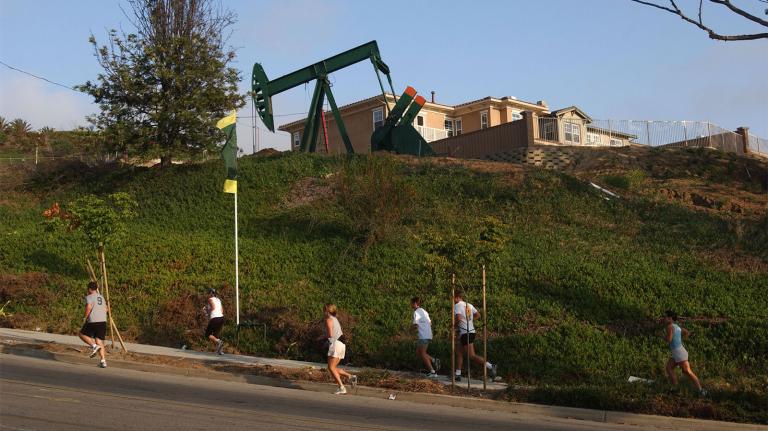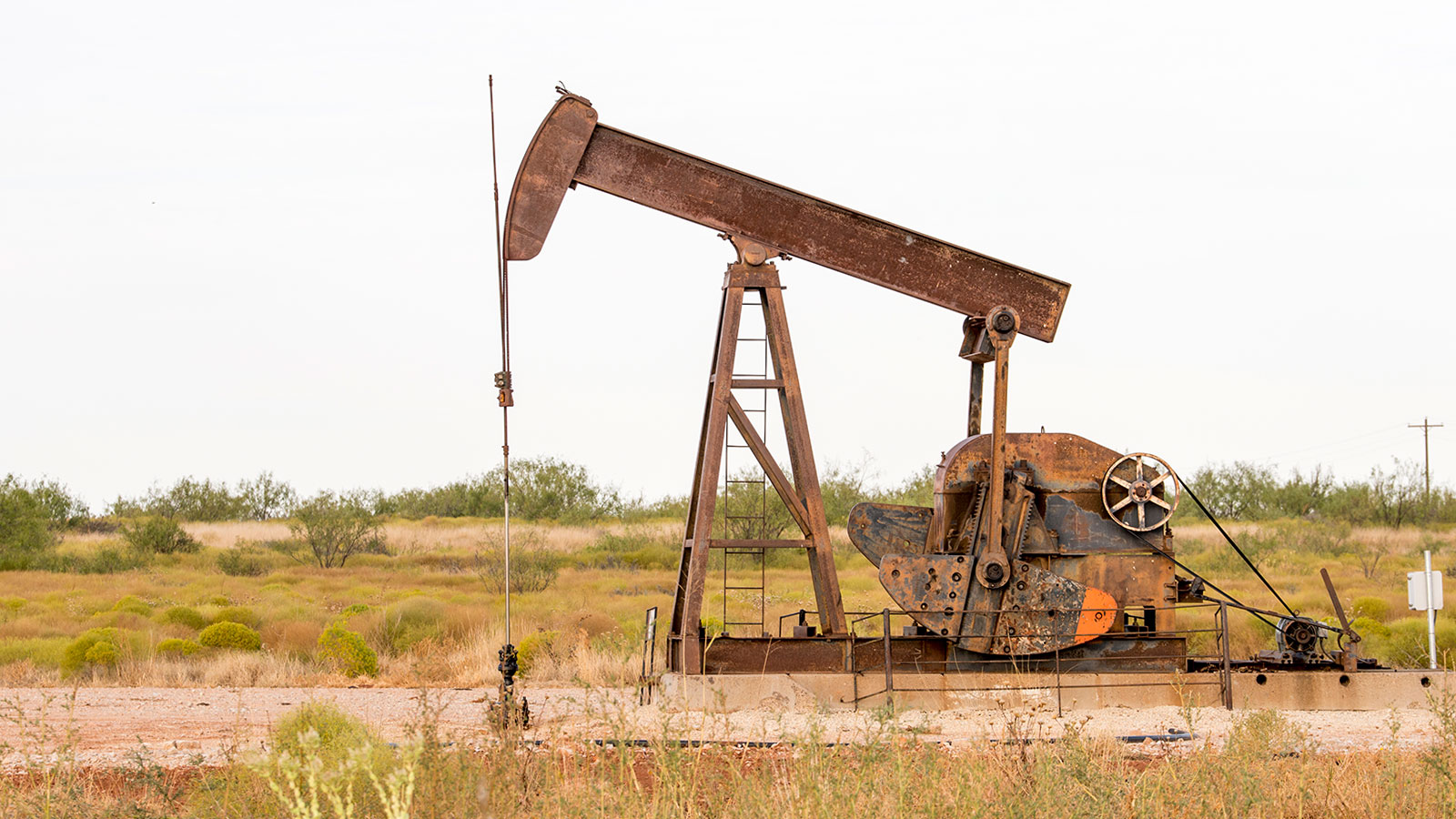The oil industry is no stranger to boom and bust cycles. When prices plummet and the bottom falls out, operators can file for bankruptcy or ditch their assets, leaving behind a plethora of abandoned wells, pipelines, compressor stations, tanks, and other equipment. This orphaned infrastructure, which often leaks the potent greenhouse gas methane and can contaminate water sources, becomes a ward of the state and a liability for taxpayers. When wells are first drilled, states are supposed to secure financial assurances from companies upfront to cover the cost of “plugging” left-behind wells with cement, removing stray equipment, and returning well sites to their pre-extractive state. Increasingly, however, the dollar amount of one of these bonds accounts for just a fraction of the cleanup cost of any given well.
A new report released Thursday shows just how wide that gap is in New Mexico, one of the top oil-producing states in the U.S.
According to an analysis commissioned by the New Mexico State Land Office, an agency that oversees the leasing of state lands, the total cost of remediating all 28,000 wells, 9,000 miles of pipeline, and other oil and gas equipment on state and private land in New Mexico is a whopping $8.4 billion. The state has financial assurances from operators for just over 2 percent of that total. Beyond the state’s responsibility, the federal government is potentially on the hook for an additional $10 billion in cleanup costs for wells, pipelines, and ancillary equipment on the state’s federal and tribal lands.
The more oil companies that abandon their equipment, the more public funding will be required to make up for this shortfall. State leaders say the new findings show that New Mexico’s bonding practices badly need reform.
“We need companies to be adequately bonded on the front end,” said New Mexico Land Commissioner Stephanie Garcia Richard in a statement. “Enormous sums of taxpayer money and money meant for public schools, along with the long-term health of our lands, are on the line.”
The report does not attempt to predict how many wells are likely to be abandoned in the coming years, which is what will determine the state’s ultimate cleanup costs. Rather, it provides a granular look at the scale of liability on New Mexico’s books and a baseline finding to inform a conversation about the risks to state resources as the country moves toward cleaner forms of energy.
New Mexico has currently declared about 700 wells officially abandoned, and it plugs a few dozen of these every year. That total is likely to balloon by more than 50 percent in the coming years, according to statistical modeling conducted by Grist and the Texas Observer, which found that over 400 additional wells will soon be abandoned in the state, with a price of at least $14 million to clean up.
The cost to New Mexicans will likely be more than financial. Orphaned and inactive wells may leak methane and other dangerous gases into the atmosphere, worsening global warming and potentially exposing those living nearby to cancer-causing chemicals and diminishing their lung functioning. They are also a physical safety hazard: Tangled wires, rusted pipes, and open well bores pose a threat to nearby wildlife and humans.
The New Mexico study was conducted by the Center for Applied Research, a consulting firm that provides economic analyses on energy and environmental policy,. The Center relied on an engineering survey of plugging and reclamation costs provided by Vertex Resource Group, a Canadian environmental services company.
Since no two wells are quite the same, Vertex took a number of factors into consideration when estimating the cost of cleanup, including the depth of wells, their geographic location, the presence of equipment downhole, and whether the wells were drilled vertically or using newer horizontal drilling techniques employed in fracking. The group also provided cost estimates for decommissioning pipelines and other ancillary oil and gas infrastructure such as compressor stations, fracking water storage ponds, petroleum storage tanks, and warehouses.
According to the report, each well will cost between $152,000 and $218,000 to plug and remediate, but the state has only secured a fraction of that amount from operators. The bonding amount varies widely, depending on the number of wells operated by a company. Operators with more than 100 wells on state lands have just $127 per well on file with the Land Office, on average. That’s because the state’s financial assurance rules are what the report describes as “regressive in design”: The more wells a company operates, the lower the financial requirements per well. For instance, a “megabond” filed with the agency for thousands of wells and miles of pipeline covers just $25,000 in cleanup costs
“The state really has to say that there’s an imbalance here between how much we’ve secured and what the potential exposures are,” said Robert Schuwerk, executive director of the financial think tank Carbon Tracker, who reviewed the report. “This is a multi-billion dollar problem, and that’s very clear from this report.”
The state’s analysis is largely in line with Carbon Tracker’s findings, though the two differ in approach. Last year, Carbon Tracker published a report estimating the cost of cleaning up wells in every state with significant oil and gas production. The group relied on depth-based estimates and calculated that all wells within New Mexico’s borders would cost $10 billion to plug. However, it did not consider the cost of decommissioning pipelines or ancillary equipment.
Schuwerk said that the New Mexico report was a good first step to begin addressing the gap between the financial assurances secured and the true cost of cleanup. “It’s very good that they’re getting to what the facts on the ground actually are,” he said. “Once they start doing that, they can make good policy around it.”




